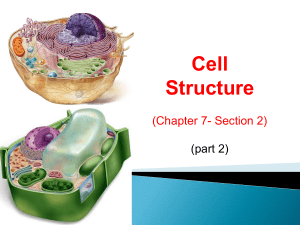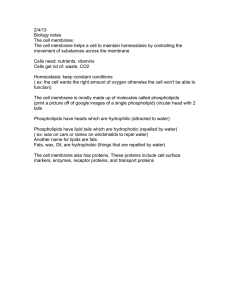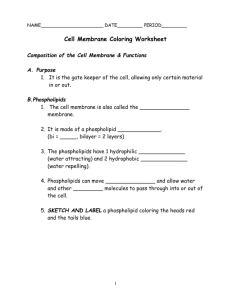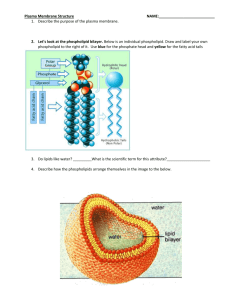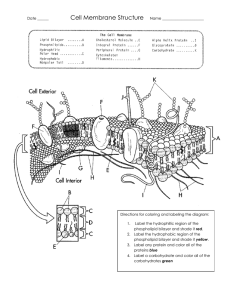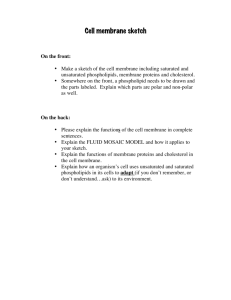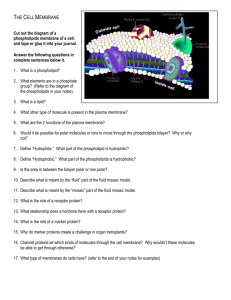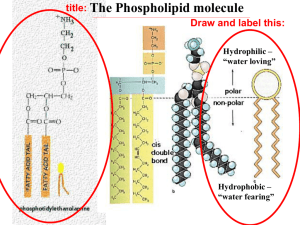Cell Membrane Structure & Function: Phospholipid Bilayer & Proteins
advertisement
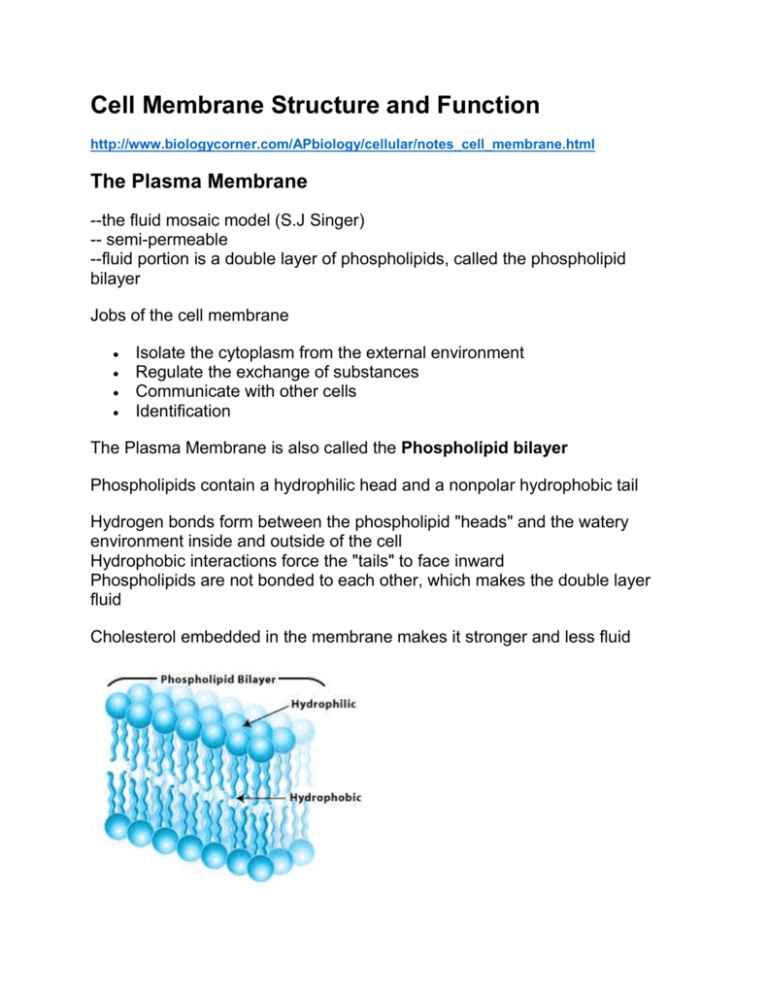
Cell Membrane Structure and Function http://www.biologycorner.com/APbiology/cellular/notes_cell_membrane.html The Plasma Membrane --the fluid mosaic model (S.J Singer) -- semi-permeable --fluid portion is a double layer of phospholipids, called the phospholipid bilayer Jobs of the cell membrane Isolate the cytoplasm from the external environment Regulate the exchange of substances Communicate with other cells Identification The Plasma Membrane is also called the Phospholipid bilayer Phospholipids contain a hydrophilic head and a nonpolar hydrophobic tail Hydrogen bonds form between the phospholipid "heads" and the watery environment inside and outside of the cell Hydrophobic interactions force the "tails" to face inward Phospholipids are not bonded to each other, which makes the double layer fluid Cholesterol embedded in the membrane makes it stronger and less fluid Proteins embedded in membrane serve different functions 1. Channel Proteins - form small openings for molecules to difuse through 2. Carrier Proteins- binding site on protein surface "grabs" certain molecules and pulls them into the cell 3. Receptor Proteins - molecular triggers that set off cell responses (such as release of hormones or opening of channel proteins) 4. Cell Recognition Proteins - ID tags, to idenitfy cells to the body's immune system 5. Enzymatic Proteins - carry out metabolic reactions Video to watch: http://www.bozemanscience.com/015-cell-membrane
